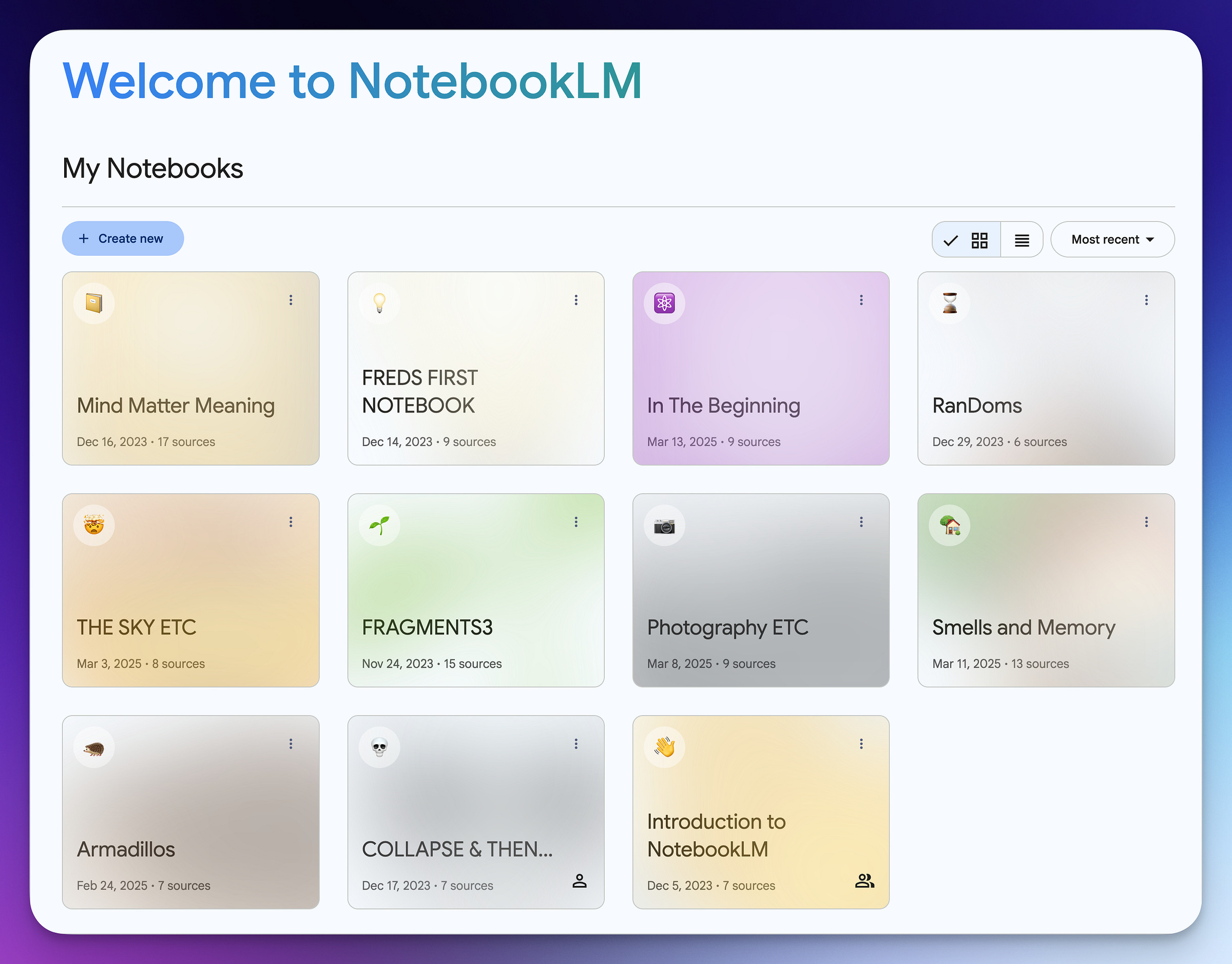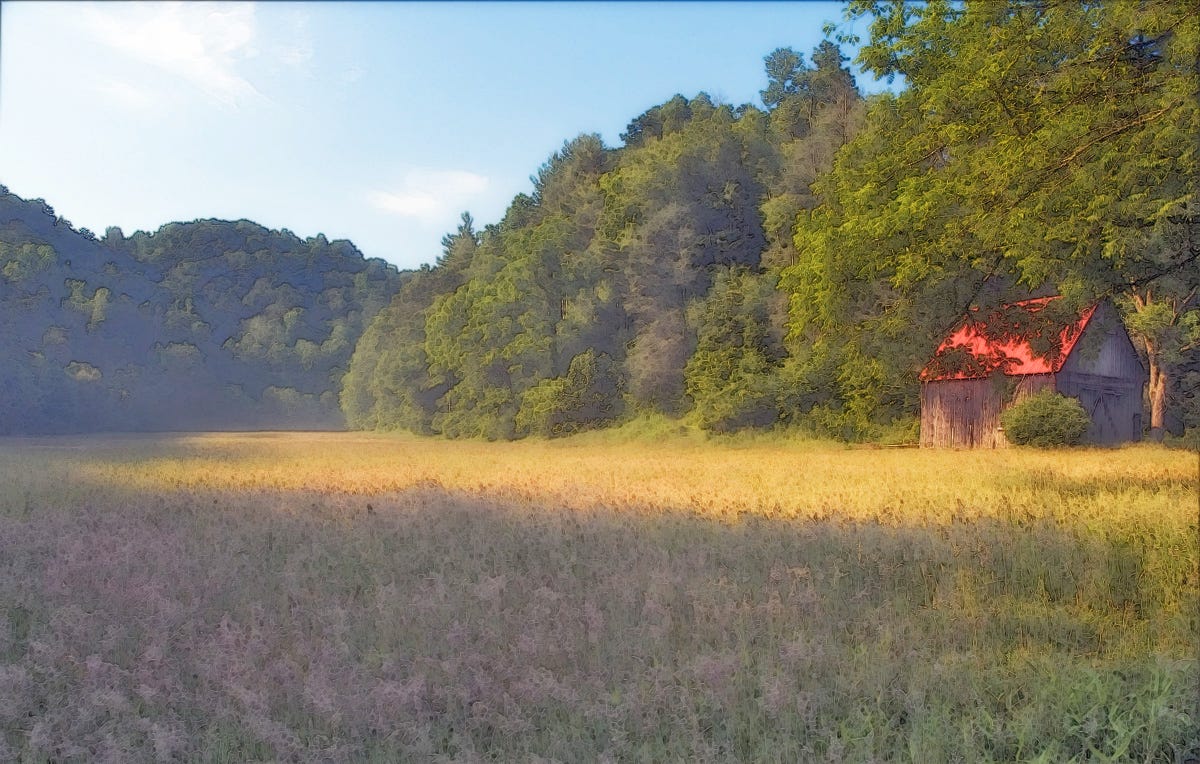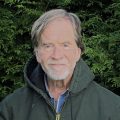“How do I know what I think until I see what I say?”
First thing of a very early morning, rather than doomscrolling the overnight progression of civilization towards the precipice, I’ve recently been winnowing through my own writing to see what I have thought, evidenced by the trails of words left behind.
Often, those words and pixels are a comfort to me, resurrected from a time when I was able to be comforted and live surrounded by natural beauty and hold at least faint hope for the world to come.
This trail of words began in 2002, though the earlier blog year archives are mostly lost until about 2007. Even so, this is a personal resource for which I continue to be thankful.
Lately, I have been using NotebookLM, where I have added “sources” of my books, my unpublished almost-book, and as many Substack posts as the tool will digest. From those sources, I have begun to query the whole of it for an AI objective view of my subjective writing.

In one of those queries, I asked for an overview, all sources considered, of the role of “place” in my writing and thinking over the years. This parsing gives me a more granular way to revisit the topic from the perspective of someone now placeless. Having left the place thought permanent I still think about the ways that place shapes us.
For those who are new here, this is a way to “catch up” with on aspect of my writer’s voice and purpose over the years. For those who have followed from early on, see if the following summary seems to ring true. [Footnotes in the text below carry me back to the places within sources from which statements were gathered.]

“Place” holds profound significance for Fred First, shaping his identity, values, and overall sense of belonging [1, 2]. He emphasizes the importance of a deep connection to the natural world and a specific geographic location, contrasting this with a sense of placelessness [2, 3].
Key aspects of the significance of “place” for Fred First:
- Identity and Belonging: First believes that place molds individuals, influencing their connection to the world [1]. He describes a longing for specific hills that provide a nutrient he cannot comfortably live without [3]. Finding a fixed and particular landscape engenders a relationship that makes people care for the soil, air, and water in a deep way [4].
- Appalachian Roots: Despite moving around, First recognizes that he has always been Appalachian and cannot escape the gravity of the mountains [5]. The mountains are his source, shaping his identity as a native son [5].
- Rejection of Placelessness: First values a deep connection to specific places, contrasting this with a “cavalier placelessness” that lacks allegiance to any particular locality or region [6]. He believes that freedom from roots has been overvalued in recent decades [6].
- Finding “Home”: First expresses a sense of being drawn to the Southern Appalachians and finding a deep commitment to a particular place [2]. This connection is as strong as his commitment to his wife, signifying a profound bond with the land [2].
- Shaped by the Land: First believes that the character of roads and the view from them contribute to the impression people carry home of what other places are like [7]. He emphasizes that life and livelihood are determined by the nature of the landscape [8].
- Stewardship: First expresses how his knowledge of the land is like a lover’s knowledge of “every fold and hillock and holler” [8]. He feels that one’s influence on a “familiar green triangle of land would end the moment [they] signed over the deed” [9].
- Memory and Imagination: First connects place to memory and imagination, recalling how a picture of a creek sparked a lifelong longing for a specific landscape [10-12]. This connection highlights how the power of imagination and longing can shape one’s sense of place [12].
- Community Connection: First notes that a growing sense of belonging to place is a common language that brings people closer [13]. This land informs identity, providing energy, inspiration, and hopes for the future [13].
- Local vs. Distant: First’s writings are hyperlocal, written for immediate consumption by local readers and listeners [14]. He often references the town or county of Floyd in southwest Virginia, setting his pieces in time and place [14].
- Intimate Relationship: An intimate relationship with the land requires daily attention to particulars through every season [1]. One can live so fast that they become oblivious to their relationship to the where of their lives is possible [1].
First’s emphasis on “place” reflects a desire for rootedness, community, and environmental stewardship, all of which contribute to a meaningful and fulfilling life [2].

About NotebookLM
- I Finally Gave Google’s NotebookLM a Shot; Here’s How to Use It – UMA Technology
- How to get started with Google’s NotebookLM
- How To Use NotebookLM As A Research Tool | by Steven Johnson | stevenberlinjohnson
🍪 If you’ve read this far, then you get a cookie.
Maybe take a look at this notebook via the share link and let me know about your experience in this first attempt to share:
Fred First Collected Writing NotebookLM March 2025
 – Fred First is an author, naturalist, photographer watching Nature under siege since the first Earth Day. Cautiously hopeful. Writing to think it through. Thanks for joining me.
– Fred First is an author, naturalist, photographer watching Nature under siege since the first Earth Day. Cautiously hopeful. Writing to think it through. Thanks for joining me.
